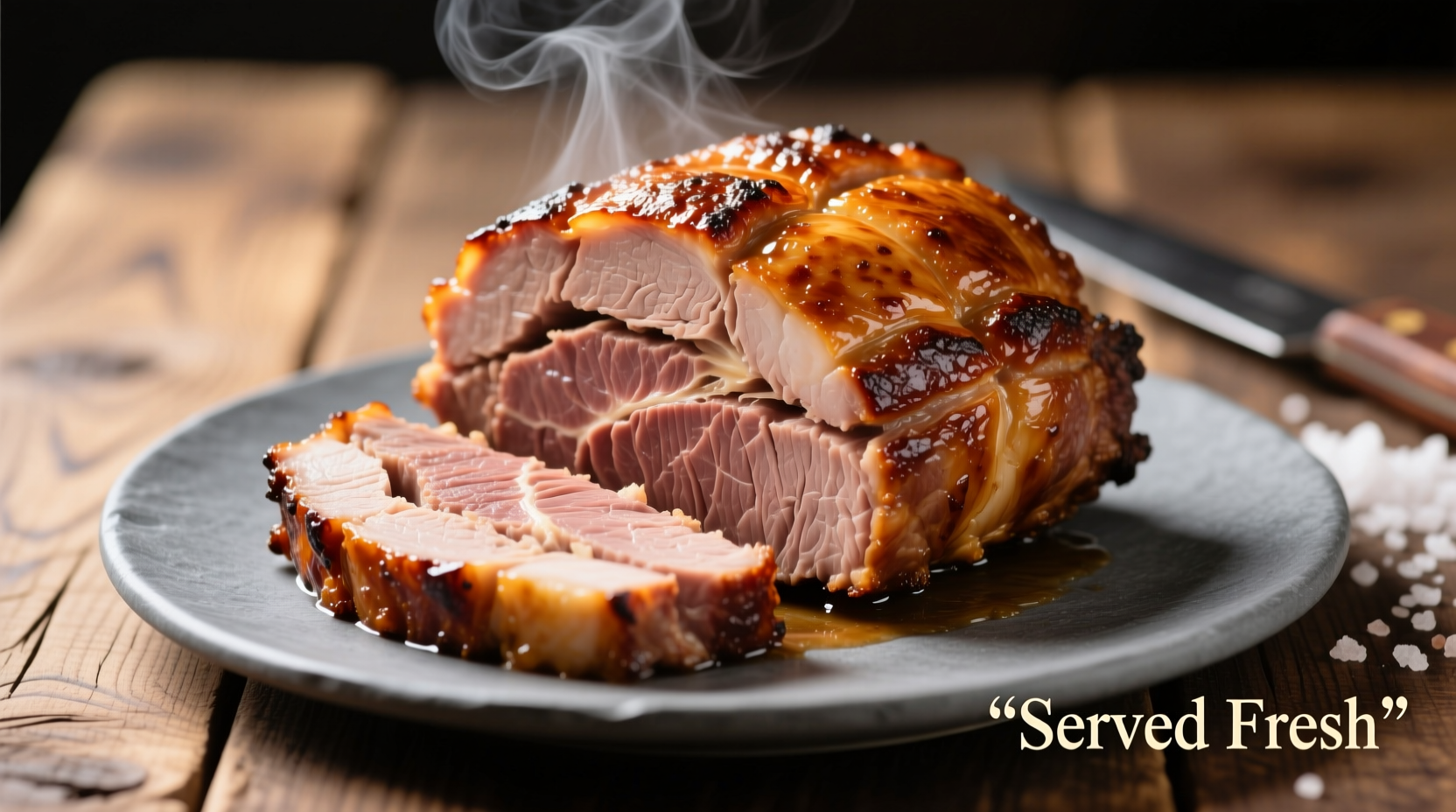Outside round roast often frustrates home cooks who expect tender results but end up with tough, dry meat. As a professional chef with years of experience transforming challenging cuts into culinary triumphs, I'll show you exactly how to master this affordable yet often misunderstood beef cut. You'll learn why traditional roasting methods fail this lean muscle, the precise temperatures that transform toughness into tenderness, and the critical slicing technique that makes all the difference.
Understanding Outside Round Roast
Outside round roast comes from the rear leg of the cow—a heavily exercised area that results in lean, flavorful meat with minimal marbling. This cut contains significant connective tissue that requires proper breakdown to achieve tenderness. Unlike ribeye or sirloin, outside round lacks fat reserves that naturally baste the meat during cooking, making technique crucial for success.
The USDA Meat and Poultry Hotline confirms that outside round contains only 4 grams of fat per 3-ounce serving, making it one of the leanest beef cuts available (USDA Food Safety and Inspection Service). This leanness explains why improper cooking quickly leads to dry, chewy results.
Preparation Essentials
Before cooking, proper preparation sets the foundation for success:
- Trimming: Remove only excess hard fat, preserving some surface fat for flavor. The American Meat Science Association recommends leaving a thin fat layer to protect the meat during cooking.
- Dry brine: Apply 1 teaspoon kosher salt per pound 12-24 hours before cooking. This enhances flavor penetration and improves moisture retention.
- Marinating: For maximum tenderness, use acidic marinades containing vinegar, wine, or citrus for 4-8 hours. Avoid over-marinating which can create a mealy texture.

Cooking Methods Compared
| Method | Temperature | Time (3lb roast) | Best For |
|---|---|---|---|
| Slow Roasting | 275°F (135°C) | 2-2.5 hours | Medium-rare results |
| Braising | 300°F (149°C) | 3-4 hours | Fall-apart tenderness |
| Sous Vide | 130°F (54°C) | 24-48 hours | Precision cooking |
Step-by-Step Slow Roasting Method
This method delivers the best balance of flavor development and tenderness for most home kitchens:
- Remove roast from refrigerator 1 hour before cooking
- Pat dry and apply seasoning mixture (2 tsp salt, 1 tsp pepper, 1 tsp garlic powder)
- Preheat oven to 275°F (135°C)
- Place roast on rack in roasting pan, fat side up
- Insert meat thermometer into thickest part
- Cook until internal temperature reaches 125°F (52°C) for medium-rare
- Remove from oven when 5°F below target temperature (carryover cooking will raise it)
According to food science research from the University of Nebraska-Lincoln, collagen in beef begins converting to gelatin at 160°F (71°C), but this process happens slowly. For outside round, maintaining temperatures between 130-160°F (54-71°C) for extended periods yields the most tender results without drying (UNL Food Science Department).
Critical Resting and Slicing Techniques
Many cooks ruin perfectly cooked roast by skipping proper resting:
- Rest for 15-20 minutes loosely tented with foil
- This allows juices to redistribute throughout the meat
- Never skip this step—it can mean 20% more retained moisture
Slicing direction determines tenderness more than cooking method. Always slice against the grain at a 90-degree angle to the muscle fibers. For outside round, identify the long parallel fibers and cut crosswise in 1/4-inch slices. This shortens the muscle fibers, making each bite easier to chew.
Troubleshooting Common Issues
Dry roast: Usually caused by overcooking or insufficient resting. Solution: Cook to lower temperatures (125°F/52°C) and rest properly.
Tough texture: Indicates insufficient collagen breakdown. Solution: Next time, braise instead of roasting, or extend cooking time at lower temperatures.
Uneven cooking: Result of irregular roast shape. Solution: Tie roast into uniform shape with kitchen twine before cooking.
Perfect Pairings and Leftover Ideas
Serve sliced outside round roast with:
- Horseradish cream sauce
- Roasted root vegetables
- Yorkshire pudding
- Red wine reduction
Transform leftovers into:
- Philly cheesesteak sandwiches
- Beef stroganoff
- Sliced cold in sandwiches with horseradish mayo
- Chopped in beef hash with potatoes
Pro Tips for Consistent Success
Professional chefs achieve consistent results by following these additional guidelines:
- Always use a reliable meat thermometer—don't guess doneness
- For extra flavor, sear roast in cast iron before slow roasting
- Add aromatic vegetables (onions, carrots, celery) to the roasting pan
- Baste occasionally with pan juices during cooking
- Let cooked roast sit in its juices for 5 minutes before slicing











 浙公网安备
33010002000092号
浙公网安备
33010002000092号 浙B2-20120091-4
浙B2-20120091-4